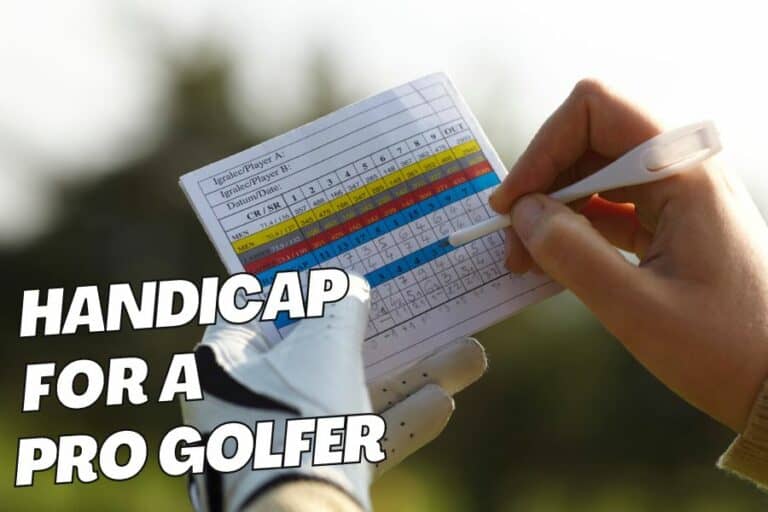PING Color Chart And Dot System 2023 – Decoded

The PING Color Chart serves as a tool that helps golfers select the most suitable club for their game. Every golfer is unique, with varying swing characteristics and body types, making it essential to have clubs tailored to your needs.
By matching the golfer’s natural swing with the colors associated with each club, players can easily decide when selecting their equipment.
However, to fully grasp each color’s functionality and significance, one must delve deeper into the mechanics of the PING Color Chart and the club fitting process.
I. What is the PING Color Chart?
The PING Color Chart is a system developed by PING, a leading golf club manufacturer, to facilitate custom fitting for golfers.
Custom club fitting involves tailoring golf clubs to suit an individual golfer’s preferences. The PING Color Chart is an integral part of this fitting process, aiding golfers and club fitters in selecting the correct specifications for PING clubs, which encompass irons, drivers, and putters.
II. Understanding the PING Color Code Chart

The PING Color Chart is a visual representation of the various specifications available for PING golf clubs. So, let us understand it in detail:
1. How does the PING color chart work?
The PING color chart determines the correct length and lie angle for a golfer’s clubs. This is achieved through a measurement process considering the golfer’s height and wrist-to-floor measurement while they stand with their arms hanging straight down by their sides.
These measurements are then used in conjunction with the PING color chart to select the appropriate club specifications, ensuring a custom fit tailored to the individual golfer’s needs.
2. How to find the right color on the ping color chart?
Here is how to find the right colored dot:
Step 1: Measure
- Find your wrist-to-floor measurement on the PING Color Chart.
- Match it with your height to determine shaft length.
Step 2: Determine shaft length
- If you are shorter than 5’7″, use a shorter shaft (negative number).
- If you are 6′, choose a longer shaft (positive number).
Step 3: Find your color
- Locate your color band at the intersection of wrist-to-floor and shaft length; it indicates your lie angle.
- Taller golfers need upright angles, and shorter golfers need flatter ones within the 12 color bands (4 to 5 degrees).
Step 4: Consider your ball flight
Consider how your irons make the ball fly if you’re stuck between two colors.
- If the ball usually goes right (fade or slice), go for the more upright lie angle.
- Pick the flatter lie angle if the ball often goes left (hook or draw).
Related Article: Draw Vs Fade- Differences, Benefits, And How To Hit?
3. What do the colors mean on PING Clubs?
Each color on the chart corresponds to specific attributes of the clubs, making it easier for golfers and club fitters to identify the right combination for a player’s needs.
This color-coded system serves as a valuable aid in comprehending the club’s lie angle, which is the angle formed between the centerline of the shaft and the club’s sole when in a standard position.
Here’s a breakdown of what the colors on the PING Color Code chart signify:
- Gold dot: 4 degrees flat
- Brown dot: 3 degrees flat
- Orange dot: 2 degrees flat
- Red dot: 1 degree flat
- Black dot: standard lie angle
- Blue dot: 1 degree upright
- Green dot: 2 degrees upright
- White dot: 3 degrees upright
- Silver dot: 4 degrees upright
- Maroon dot: 5 degrees upright
4. How do you read the shaft length of the PING Color chart?
Understanding how to interpret the shaft length on the PING Color Chart is essential for proper club fitting. Here’s a breakdown of the shaft length recommendations based on height:
- 1 ½ ” Above standard: for golfers 6’6” – 6’7” tall
- 1” Above standard: for golfers 6’4” – 6’5” tall
- ½” Above standard: for golfers 6’1’ – 6’3” tall
- Standard length: for golfers 5’7” – 6’0” tall
- ½” Below standard: for golfers 5’4” – 5’6” tall
- 1” Below standard: for golfers 5’2” – 5’3” tall
- 1 ½” Below standard: for golfers 5’0” – 5’1’ tall
III. 7-STEP Club FITTING PROCESS
Here are seven simple steps for the PING Golf Club fitting:
Step 1: Understand your playing style
Discuss your game and improvement goals with your fitter. If you have club data from tracking your stats or using tools like Arccos Golf’s Caddie Smart Sensors, make sure to bring this along.
Step 2: Take static measurements
Your fitter will take height and wrist-to-floor measurements to determine initial club specifications, including lie angle and shaft length. You can also use PING’s WebFit tool online to assist with this.
Step 3: Dynamic swing analysis
The fitter will ask you to hit balls with your current clubs and demo PING clubs on a lie board, with lie tape applied to the club’s sole. This process will help your fitter understand your impact tendencies.
Step 4: Analyze ball flight & shot shape
Through careful observation of your ball flight and precise radar readings, your fitter will evaluate the following parameters:
- Launch conditions
- Landing angle
- Peak trajectory
- Shot dispersion
- Carry distances
Step 5: Club selection
This step focuses on determining the right set makeup by analyzing the distance gaps between each of your clubs, especially your wedges and long irons/hybrids.
Step 6: Determine grip size
After selecting the appropriate club set makeup, the next step is to refer to the PING Grip Size Chart to measure your hands and determine the correct grip size for your clubs. Following this, your fitter will recommend the style and size of grips that best align with your game.
Step 7: On-course evaluation
Play a few rounds after getting your new clubs and evaluate your performance. Tools like Arccos Golf’s Caddie Smart Sensors can help with this assessment.
IV. Importance of PING Color Chart
Custom club fitting isn’t reserved for pros; it’s essential for all golfers. The PING Color Chart’s importance lies in optimizing club specs to match a golfer’s swing, enhancing performance. Key reasons for its significance include:
- Lie Angle Precision: The PING Color Chart provides crucial information about the lie angle for irons, ensuring precision in club customization.
- Loft Considerations: The chart highlights the significance of lie angle in shot accuracy and performance, especially important for clubs with higher loft.
- Accuracy Enhancement: Golfers struggling with accuracy, distance, and control can benefit significantly from a lie angle correction facilitated by the PING Color Chart.
- Shot Direction: Lie angle directly influences shot direction. An improper angle can lead to shots veering left or right, making the PING dot color chart an essential tool for correcting ball flight.
- Versatility: The PING Chart caters to golfers of all skill levels, proving invaluable in finding the right club fit, irrespective of one’s experience on the course.
V. How accurate is PING Color chart?
The accuracy of the PING Color Chart in club fitting is highly reliable. As a reputable golf club manufacturer, PING has developed this color-coded system through extensive research and testing to ensure precise adjustments for golfers.
The chart considers various factors, including a golfer’s height, wrist-to-floor measurement, and swing tendencies, to determine the appropriate lie angle and club specifications.
The combination of technology, expertise, and the PING Color Chart results in a highly accurate club fitting process that has proven to improve golfers’ performance on the course significantly.
Conclusion
The PING Color Chart revolutionizes golf club fitting, enhancing consistency, accuracy, and distance. This tool, coupled with PING’s thorough fitting process, elevates golfers’ performance and enjoyment, unlocking their full potential on the course through customized clubs with a particular color code.








